MaterialsI began this apron before I had my hands on the book Löydöstä Muinaispuvuksi (NEW! 2021) which covers ... umm, well, everything. I couldn't wait any longer for the English version and decided to use my translation muscles. The authors did a wonderful job and anyone that is interested in creating the clothing of ancient Finland will want a copy, even in Finnish! So I used what I had to proceed- the Perniön muinaispuku booklet, documents and discussions from the Iron Age Finland FaceBook group, lectures by Mervi Pasanen, pictures of pieces in museums and so forth. The problem with the Perniön muinaispuku booklet is many of the instructions and how-to's, well, some are now recognized as incorrectly interpreted (like the forehead dangles instead of temple ornaments). The booklet still contains great pictorial information and instructions, and I use Google Translate, and logic to translate Google translate, to understand the descriptions.
I know from previous knowledge absorbed through these sources that wool, particularly 2/2 twill but also other twill and plain weave too, seem to be what the majority of Iron Age Finnish clothing is made from. Though newer research points towards the possibility that the under layers are made from linen/or plant fibers. I mean... itchy bottoms from pokey wool? no thanks.
And, just like the crewel embroidery wool from SAFF that I used for the Codex Manesse garters, and the brick pattern bands on the aprons, I got this twill wool cloth at SAFF too. This is a 2/1 twill, of a light weight merino wool, in a beautiful golden color that is achievable through ancient dye stuffs.
For the coil string, I tried to match the fabric color to the wool thread I had on hand since I didn't have the warp or weft threads to match. The exception here is the red cording I used for the applique piece at the waist; I used the same red wool as the brick pattern tablet band. Red wool has been found as the threading for other applique pieces and I thought it added symmetry.
Making the ApronI did my best to approximate the tubular selvage edges found in most Iron Age Finnish finds; As it turned out this is the guidance provided in the Löydöstä Muinaispuvuksi book if you cannot weave your own cloth, or have it woven for you. This was done simply by making a very narrow hem on each edge; though I did pull some warp threads to help give the appearance of the pattern for a tubular selvage. (I'm not sure I would do this again. it doesn't add enough of a difference to be really noticeable.)
See in the picture with the tan colored brick band? See the wrinkles? That means the band tension was too tight... so I wanted to re-do the tension... and besides, that grey/tan color was bland and bleh. High contrast there I went! Red I knew would work well, since the tablet woven band that accompanies this apron is white and red. (But I didn't know until after the project was done that the original interpretation of the belt was yellow and red.) To my modern eye, I much preferred the red/yellow contrast.
All the coils were nextYou know how sometimes you can get so focused on a project you miss details? or as the saying goes, you can't see the forest for the trees? Well. Just as my applique piece was finished and I could start to attach it to my apron... I realized my applique did not match the pictures in the Perniö booklet or source pictures for how this applique looks; even though I followed the threading directions, which are pretty straight forward.
So guess what I did?! yep. I pulled all of the coils off, and started again on row 2. It really didn't take that long, and I really wanted it right.
On row 2 I figured out the issue. aaaand, now after looking things over... I probably could have completed the original and then flipped it over. /facepalm There is the forest and trees part. However, if I had not redone it, I couldn't have re-organized and made better fitting, more uniform columns. So I still feel it was well used time and a good learning experience.
The applique piece is then centered and sewn onto the waist of the apron below the top edge. Because it is heavy, the goal here is to secure the applique piece in place and support the weight. I sewed this similar to how the edge coils are attached, by stitching down the cord that runs through the coils; the sewing thread/yarn also helps by providing extra support as it travels through the coils as well. Although, unlike the coils on the apron edge, a stitch was not needed between every coil bead.
I began stringing and sewing the bronze coils to the edge after the applique was attached. I did the top edge first, to make sure I used the proper sized coils, since they are different from the sides and bottom edge. These are also attached using the same method of strung on a braided cord, and then the cord is sewn to the edge. There are good instructions in the Löydöstä Muinaispuvuksi book, Mervi Pasanen's Instagram has a video, and the Perniön booklet does instruct that between coils is about a 2-3 mm gap for the stitch. pg 17
what would I change...There actually aren't many changes I would make to this project. I'm pretty darned happy with the outcome. That signals a pretty good project, right?
if you made it this far, thank you. I know I included a LOT of information. but maybe this will help someone with their project in the future. :)
0 Comments
Your comment will be posted after it is approved.
Leave a Reply. |
AuthorYep, still me. Archives
September 2023
Categories |

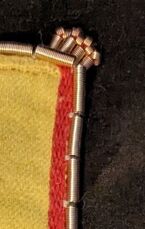
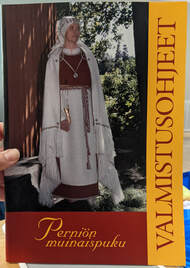
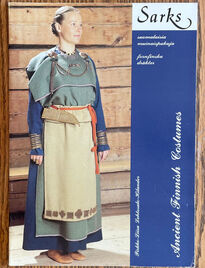

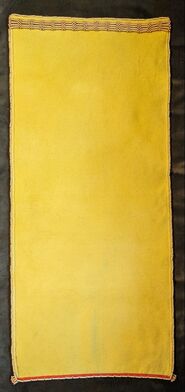
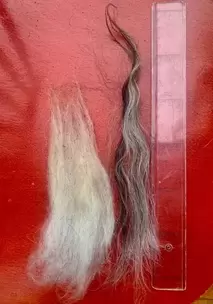
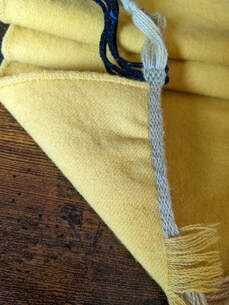
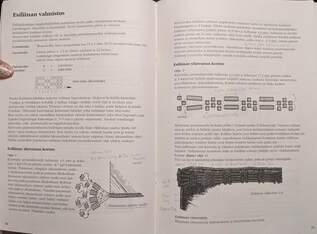
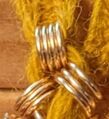
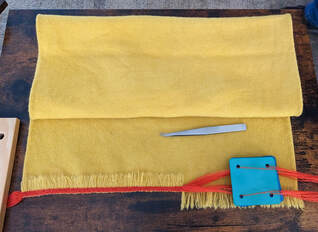
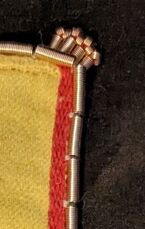
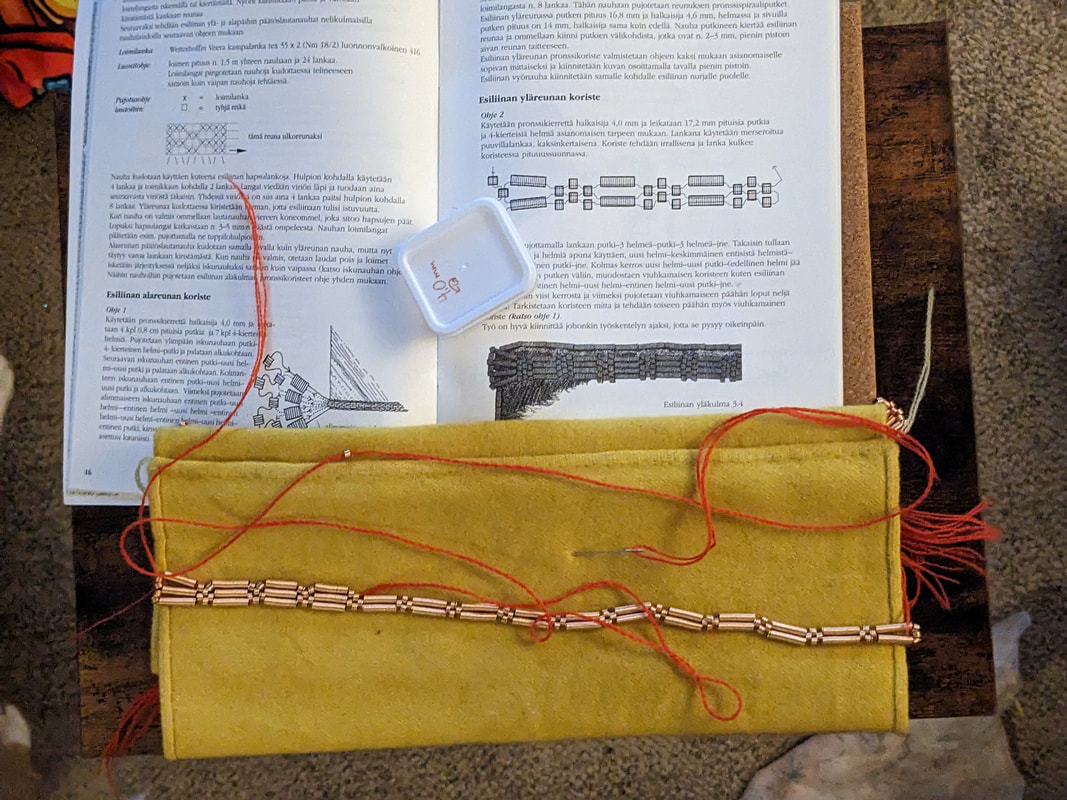
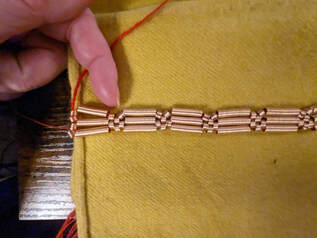
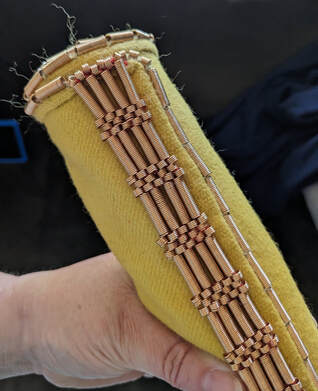
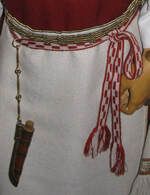
 RSS Feed
RSS Feed
